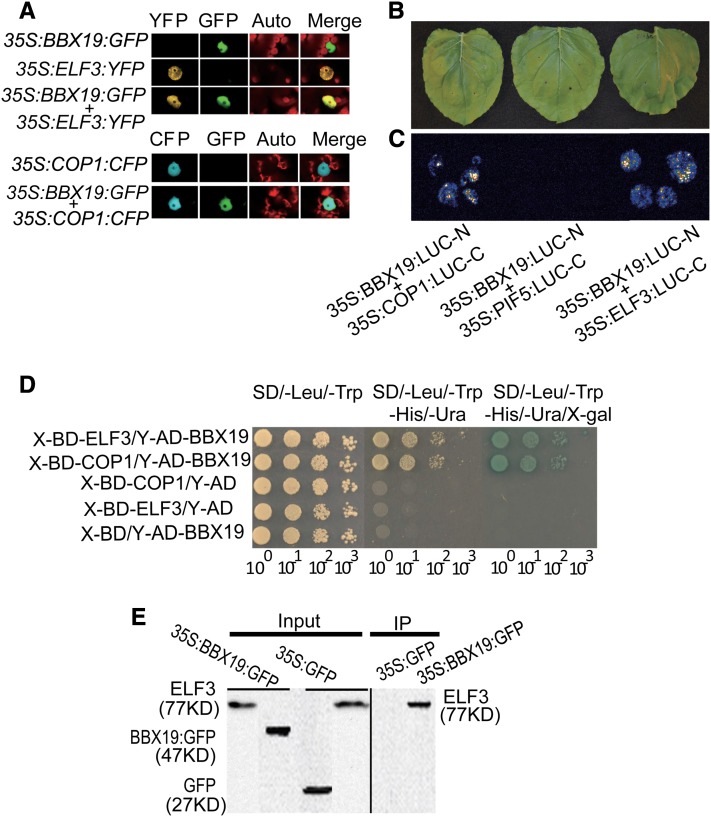Figure 5.
BBX19 Is Nucleus-Colocalized with and Interacts Physically with ELF3 and COP1.
(A) Representatives of transient assays in N. benthamiana expressing 35S:ELF3-YFP, 35S:COP1-CFP, or 35S:BBX19-GFP individually or in a combination, displaying nuclear colocalization of BBX19 and COP1 as well as BBX19 and ELF3.
(B) and (C) Representatives of split-luciferase complementation assays in N. benthamiana displayed by bright-field (B) and dark-field (C) imaging of leaves expressing BBX19/COP1 and BBX19/ELF3 each fused to N- and C-terminal fragments of luciferase. The fusion construct with PIF5 was used as a negative control.
(D) Yeast two-hybrid assays display the BBX19 physical interaction with ELF3 and with COP1. Diploid yeast cells containing both prey construct Y-AD-BBX19 and bait constructs X-BD-COP1 and X-BD-ELF3 were obtained by mating. Overnight cultures were normalized to an OD600 of 1, serially diluted as indicated, and spotted onto nonselective medium lacking Leu and Trp (left panel) and selective medium lacking Leu, Trp, His, and Ura (middle panel) and with X-Gal (right panel). Negative controls contained empty bait and/or prey vectors.
(E) In vivo interaction between BBX19 and ELF3 determined by coimmunoprecipitation assay. Protein samples obtained from 35S:BBX19:GFP and 35S:GFP seedlings were immunoprecipitated (IP) with GFP antibody, and ELF3 (77 kD) was detected by immunoblotting using α-ELF3 antibody.

